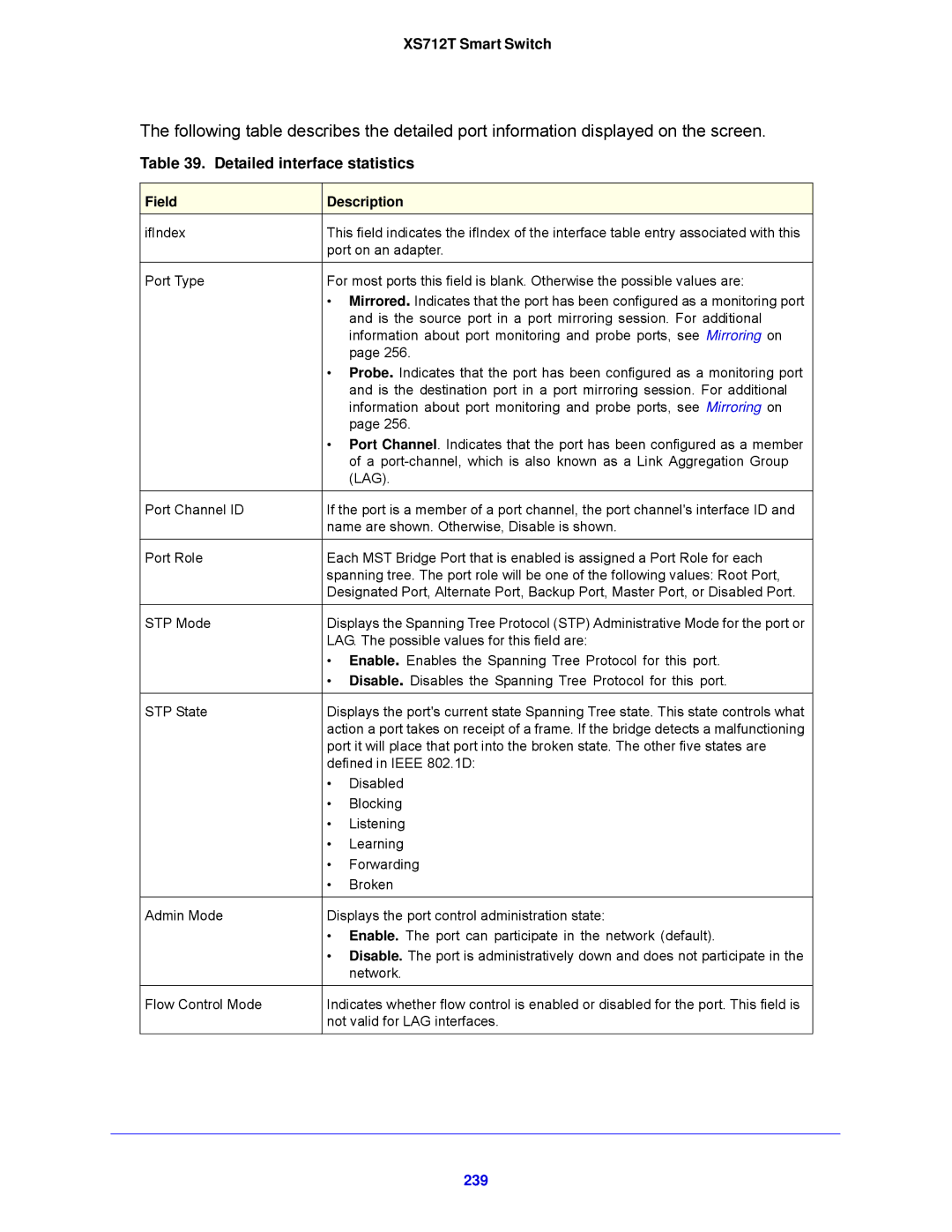XS712T Smart Switch
The following table describes the detailed port information displayed on the screen.
Table 39. Detailed interface statistics
Field | Description | |
ifIndex | This field indicates the ifIndex of the interface table entry associated with this | |
| port on an adapter. | |
Port Type | For most ports this field is blank. Otherwise the possible values are: | |
| • Mirrored. Indicates that the port has been configured as a monitoring port | |
|
| and is the source port in a port mirroring session. For additional |
|
| information about port monitoring and probe ports, see Mirroring on |
|
| page 256. |
| • Probe. Indicates that the port has been configured as a monitoring port | |
|
| and is the destination port in a port mirroring session. For additional |
|
| information about port monitoring and probe ports, see Mirroring on |
|
| page 256. |
| • Port Channel. Indicates that the port has been configured as a member | |
|
| of a |
|
| (LAG). |
Port Channel ID | If the port is a member of a port channel, the port channel's interface ID and | |
| name are shown. Otherwise, Disable is shown. | |
|
| |
Port Role | Each MST Bridge Port that is enabled is assigned a Port Role for each | |
| spanning tree. The port role will be one of the following values: Root Port, | |
| Designated Port, Alternate Port, Backup Port, Master Port, or Disabled Port. | |
|
| |
STP Mode | Displays the Spanning Tree Protocol (STP) Administrative Mode for the port or | |
| LAG. The possible values for this field are: | |
| • Enable. Enables the Spanning Tree Protocol for this port. | |
| • Disable. Disables the Spanning Tree Protocol for this port. | |
STP State | Displays the port's current state Spanning Tree state. This state controls what | |
| action a port takes on receipt of a frame. If the bridge detects a malfunctioning | |
| port it will place that port into the broken state. The other five states are | |
| defined in IEEE 802.1D: | |
| • | Disabled |
| • | Blocking |
| • | Listening |
| • | Learning |
| • | Forwarding |
| • | Broken |
|
| |
Admin Mode | Displays the port control administration state: | |
| • Enable. The port can participate in the network (default). | |
| • Disable. The port is administratively down and does not participate in the | |
|
| network. |
Flow Control Mode | Indicates whether flow control is enabled or disabled for the port. This field is | |
| not valid for LAG interfaces. | |
|
|
|
